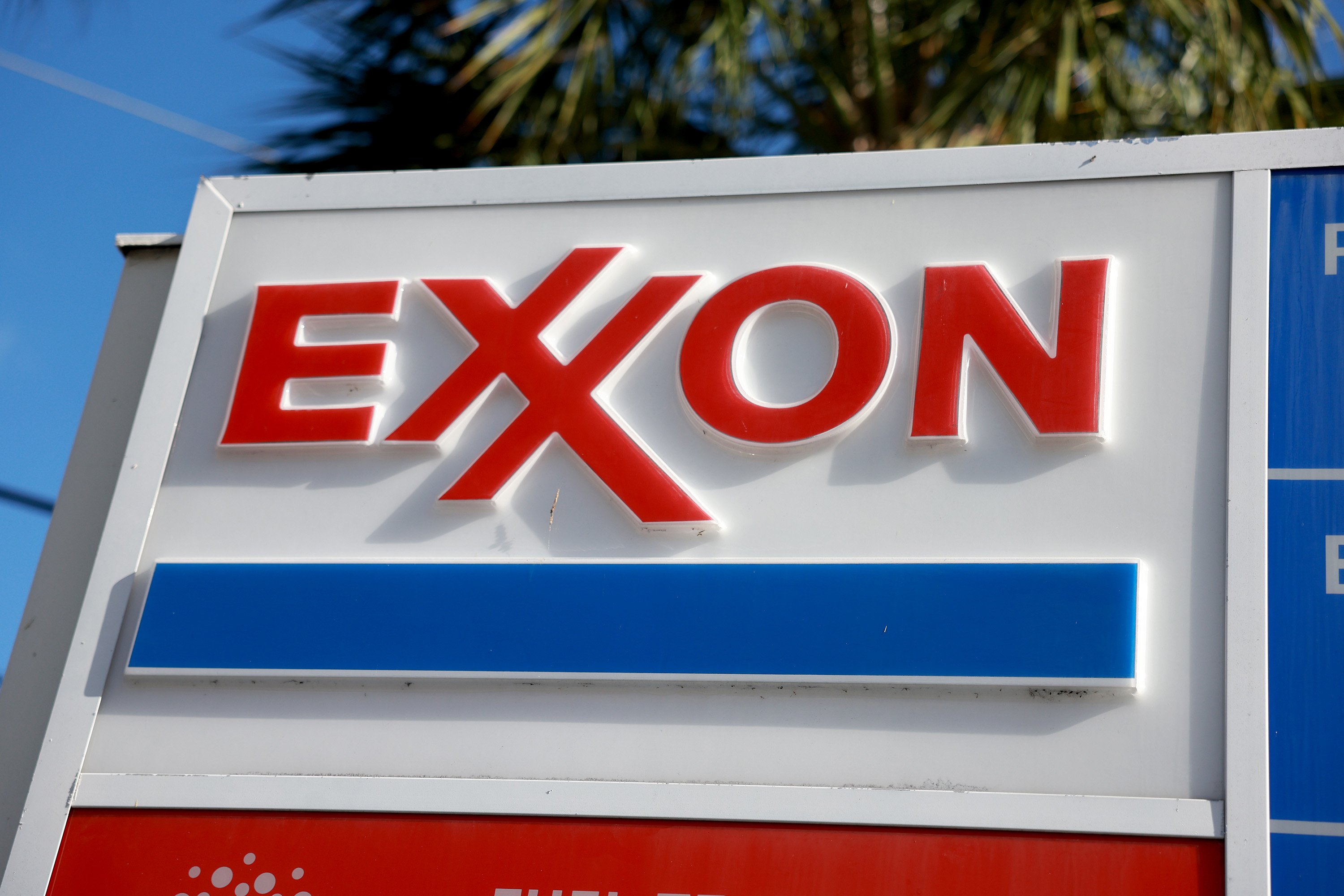Oil prices are in the dumps thanks to an ugly mix of world events, and the situation is likely to take a long time to resolve. ExxonMobil's (XOM +0.13%) earnings were already under pressure, and now that the oil downturn has deepened the numbers are only going to look that much worse.
That's why investors with a long-term view should focus on the things that Exxon can control. And on that front it's doing quite well.
Oil prices are always volatile
If you listen to an energy industry CEO talk, they are likely to discuss long-term supply and demand fundamentals. Yes, current energy prices are important, but the heads of these companies know that they operate in a highly cyclical industry in which prices can move rapidly and often dramatically. In fact, the heads of Exxon, Chevron, and Royal Dutch Shell have all highlighted that a growing population will lead to increasing long-term demand for all energy sources. Thus, oil, and increasingly natural gas, will be vital. That's why the near-term ups and downs in the industry are less important than the long-term fundamentals that underpin demand.

Image source: Getty Images
Still, as an investor, it's hard to ignore the negatives today. For one thing, increasing production in the United States has upended long-term industry dynamics and pushed down prices. OPEC had been attempting to manage the industry shifts by cutting production, but the U.S. just filled whatever void was left. Eventually OPEC and Russia got into a tiff over additional cuts, which sent oil prices tumbling anew on fears of an oil price war. Then countries around the world essentially shut down in an attempt to contain the spread of COVID-19, drastically reducing demand for oil at a time when supply was high and expected to go even higher.
Although OPEC, Russia, and the United States appear to have brokered a truce in the feared oil price battle, it's likely to be too little, too late. Demand reduction related to the coronavirus has led to a buildup of oil sitting in storage. That oil will have to be worked off before prices can start a sustained rise again. The extra oil, however, won't be worked off in a material way until global economic activity is allowed to start up again following the COVID-19 shut down. So earnings were bad for oil companies like Exxon, and they are likely to stay bad for a while. In fact, companies throughout the industry are pulling back on capital spending plans to save money and further reduce supply. Exxon has pledged to trim spending from roughly $33 billion in 2020 to $23 billion, a 30% drop. It's also looking to cut expenses by around 15%.
Long-term investors, however, shouldn't despair. It may take a bit for the industry's supply/demand dynamics to get back in line, but the industry's cutbacks are likely to lead to a situation in which oil prices recover. That's just how it goes in a cyclical industry like energy. Exxon is prepared for it, and making the necessary changes to muddle through -- for example, it has been issuing debt so it has ample cash to fund its business while revenue is cyclically weak.
The long-term view
So Exxon is doing what it has to do in order to deal with a difficult market environment. Sure, 2019 wasn't a great year on the top or bottom line (once you remove asset sales), and 2020 will likely be worse. But Exxon is rolling with the punches here, as it has many times before. Note that the company has increased its dividend for 37 consecutive years, an impressive track record in a cyclical industry. You don't achieve that kind of dividend history without doing a lot of things right along the way.
That's something that investors should focus on at Exxon. Instead of worrying about something that management can't control (oil prices), look at what it can control. And on that front, there's a lot that's going well today.
For example, Exxon has been expanding its production in the onshore U.S. space, using its scale and technological expertise to rapidly, and cost-effectively, increase output. Production in the region was up a massive 79% in 2019, living up to the guidance the company has been providing. Admittedly, that kind of growth rate can't continue for too long simply because of the law of large numbers -- and because of the low price of oil today, Exxon is actually looking to pull back in the region. This makes sense given that U.S. unconventional oil wells are relatively easy to develop (compared to offshore oil wells, for example). Thus production can be ramped up and down fairly quickly, making it a prime candidate for moderating production.
But the success Exxon has had in the region is a testament to the company's ability to execute on big projects. When oil prices rise again, which is highly likely over time, expect it to ramp up onshore U.S. production again.
XOM EPS Diluted (Quarterly) data by YCharts
Getting big projects done is a core competence for Exxon. That really starts to become apparent when you look at its efforts in the waters off of Guyana. It first found oil in the area in 2015, and since that time has identified 16 potential drill sites. The amount of oil it believes it has found has gone from around two billion barrels in 2015 to eight billion. And it's only just getting started on the production front, with its Liza project starting up ahead of schedule. It will produce around 120,000 barrels of oil a day in 2020. Over time the Guyana region could produce as much as 800,000 barrels of oil a day as new drill sites are exploited.
Exxon's business spans from the upstream (drilling) to the downstream (chemicals and refining), and it has been working to upgrade its business across the entire spectrum. The goal on the downstream side is to move up the value chain so it can produce more premium products. These projects are generally smaller than building offshore oil rigs, and are often more along the lines of upgrades to existing assets.
However, during Exxon's fourth-quarter 2019 earnings conference call, CEO Darren Woods was pleased to note that Exxon had completed three downstream projects and eight in the chemicals business. Although margins in the chemicals and refining space are low today, hampering earnings, the company is successfully repositioning itself for better days.
Look at what Exxon can control
When Exxon reports first-quarter 2020 earnings, the numbers are going to be dismal. But don't get too caught up on that -- earnings are going to be terrible throughout the energy sector. Focus instead on Exxon's ability to do the things it has said it would do. For the last couple of years it has executed well on that front. And while the pullback in spending driven by low oil prices will slow the company's progress to some degree, when Exxon releases quarterly earnings in 2020, pay more attention to things it can control (successful exploration and project execution) than the things it can't (oil prices). Do that and you're likely to come away with a far more positive view of the situation.







